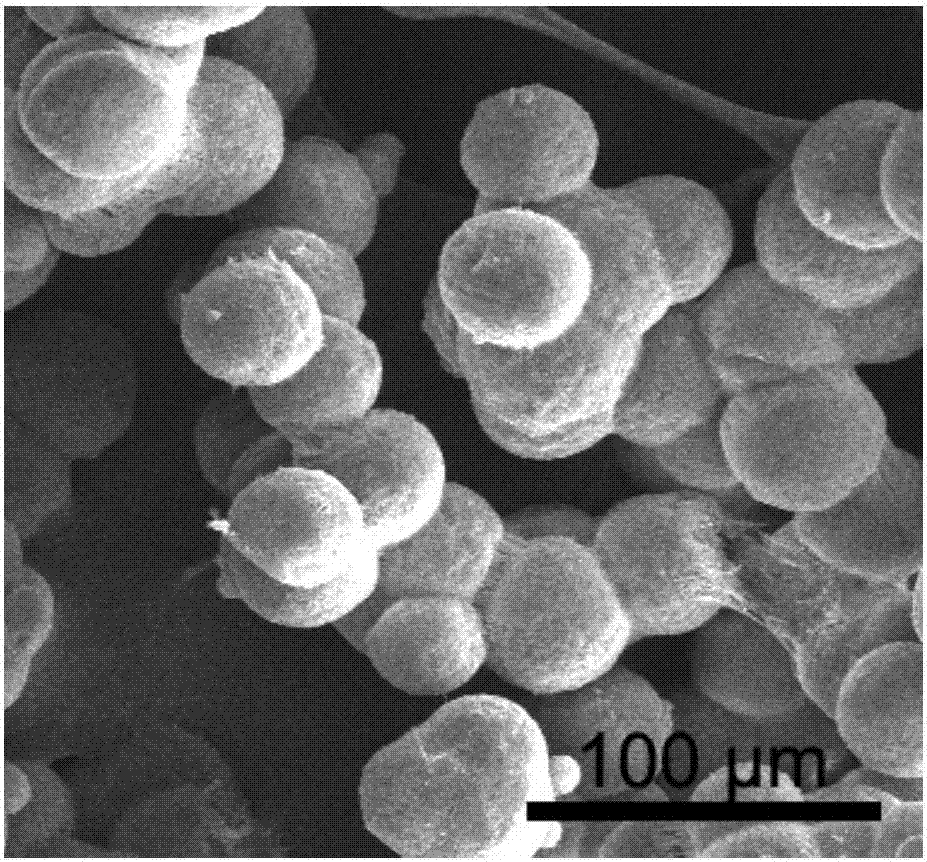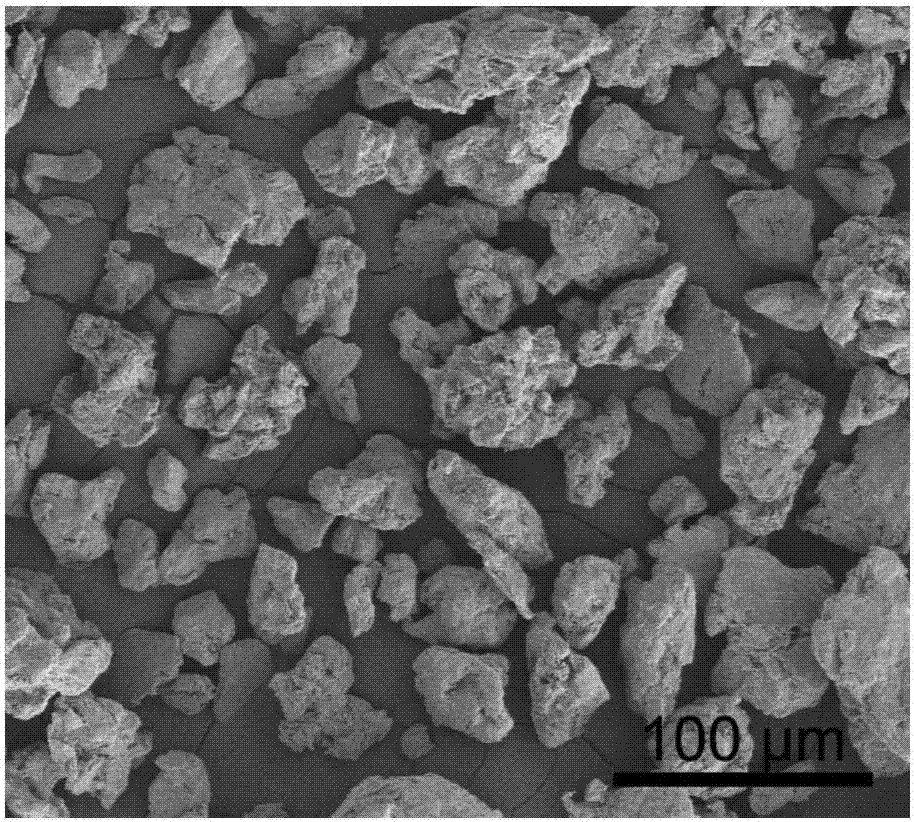Polyformaldehyde resin powder for selective laser sintering and preparation method thereof
A polyoxymethylene resin, laser sintering technology, applied in the direction of additive processing, can solve the problems of irregular shape, lack of raw materials, affecting the performance of the molded body, etc., to achieve the effect of improving heat resistance and service life, and reducing the degradation mechanism
- Summary
- Abstract
- Description
- Claims
- Application Information
AI Technical Summary
Problems solved by technology
Method used
Image
Examples
Embodiment 1
[0055] 100 parts by weight of polyoxymethylene resin (melt index (190° C., 2.16 kg) is 50 g / 10 min) and 1000 parts by weight of acetone were placed in an autoclave. Introduce high-purity nitrogen to 0.2MPa; then raise the temperature to 130°C, and keep the temperature at this temperature for 90 minutes; after the end of constant temperature, cool down to 90°C with cooling water at a rate of 1.0°C / min, and keep the temperature at this temperature for 60 minutes; continue Decrease to room temperature at a rate of 1.0°C / min. Add 0.5 parts by weight of zirconium phosphate silver-loaded antibacterial agent in the solid-liquid mixture obtained, carbon nanotubes of 0.5 parts by weight, add 10 parts by weight of ultra-short glass fibers with a diameter of 5 μm and a length of 150 μm, and an antioxidant of 0.25 parts by weight 1010 and 0.25 parts by weight of antioxidant 168, and 0.5 parts by weight of calcium stearate, after centrifugal separation and vacuum drying, polyoxymethylene r...
Embodiment 2
[0057] 100 parts by weight of polyoxymethylene resin (melt index (190° C., 2.16 kg) is 65 g / 10 min) and 800 parts by weight of acetone were placed in an autoclave. Introduce high-purity nitrogen to 0.3MPa; then raise the temperature to 140°C, and keep the temperature at this temperature for 30 minutes; after the constant temperature is over, the cooling water will drop to 85°C at a rate of 1.0°C / min, and keep the temperature at this temperature for 60 minutes; Decrease to 20°C at a rate of 1.0°C / min and hold at 20°C for 60 minutes. Add 0.05 parts by weight of zinc pyrithione, 5 parts by weight of conductive carbon black, 25 parts by weight of ultra-short glass fibers with a diameter of 10 μm and a length of 250 μm, 0.25 parts by weight of antioxidant 1010 and 0.25 parts by weight of the obtained solid-liquid mixture. After the antioxidant 168 in parts by weight and zinc stearate in 1 part by weight, the material is centrifuged and vacuum-dried to obtain polyoxymethylene resin ...
Embodiment 3
[0059] 100 parts by weight of polyoxymethylene resin (melt index (190° C., 2.16 kg) is 30 g / 10 min) and 1200 parts by weight of acetone were placed in an autoclave. Introduce high-purity nitrogen to 0.1MPa; then raise the temperature to 130°C, and keep the temperature at this temperature for 120 minutes; cool down to room temperature at a rate of 0.5°C / min. In the obtained solid-liquid mixture, add 1.5 weight fractions of nano zinc oxide, 2.5 weight fractions of conductive carbon black and 0.1 weight fractions of carbon nanotubes, 10 weight fractions of ultra-short glass fibers with a diameter of 15 μm and a length of 200 μm, and 0.2 weight fractions After the antioxidant 1010, 0.2 parts by weight of antioxidant 168, and 0.75 parts by weight of nano-silica, the materials were centrifuged and vacuum-dried to obtain polyoxymethylene resin powder suitable for selective laser sintering. The particle size and particle size distribution results of the polyoxymethylene resin powder o...
PUM
| Property | Measurement | Unit |
|---|---|---|
| Melt index | aaaaa | aaaaa |
| Length | aaaaa | aaaaa |
| Melt index | aaaaa | aaaaa |
Abstract
Description
Claims
Application Information
 Login to View More
Login to View More - R&D
- Intellectual Property
- Life Sciences
- Materials
- Tech Scout
- Unparalleled Data Quality
- Higher Quality Content
- 60% Fewer Hallucinations
Browse by: Latest US Patents, China's latest patents, Technical Efficacy Thesaurus, Application Domain, Technology Topic, Popular Technical Reports.
© 2025 PatSnap. All rights reserved.Legal|Privacy policy|Modern Slavery Act Transparency Statement|Sitemap|About US| Contact US: help@patsnap.com


